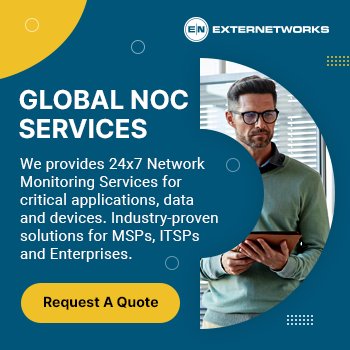Cloud vs Managed Cloud – The Questions You Must Always Ask

Today, enterprises of all sizes leverage cloud computing in one form or another. However, getting to a successful cloud deployment can present challenges to those unfamiliar with the benefits and complexities of moving their business processes from their current premises-based data centers.
With over 200 cloud computing providers and their various cloud service offerings, choosing a model with the effective use of cloud automation, self-service and orchestrations tools is one of the biggest challenges for businesses. Many questions should be considered when it comes to capital investment and ROI, proper staffing, security, maintenance, reliability, and productivity.
This blog post will explore these questions but will first discuss the types of cloud computing for consideration, the benefits of moving to a cloud computing model, the solutions and services that enable a successful deployment and ongoing management, as well as the ways to approach this from a nut-and-bolt approach to a do-it-yourself (DIY) approach to one where managed services are involved.
Considering the Cloud: Public vs. Private
We are at an interesting and exciting inflection point when it comes to technology, and there’s one thing that’s on the top of everyone’s mind: the cloud.
Enterprise companies leverage the cloud for a variety of reasons. Still, one of the key reasons to deploy a cloud computing model is business continuity and reliability, where no single point of failure will impact business operations and production.
However, depending on the nature of your business, there are different business goals, parameters, and objectives that require a specific cloud solution.
Specifically, when we look at public and private cloud computing models, there are some similarities but also some major differences that enterprises need to consider based on their specific business objectives. Let’s first look at public and then private cloud models:
Public Cloud
A public cloud computing model is very straightforward and affordable when looking at it from a deployment perspective, and the only thing you need is an Internet connection to set up shop. Of course, if you’re data resides in the public cloud, data access restrictions are much more of an obstacle if you’re dealing with Payment Card Industry (PCI) or Health Insurance Portability and Accountability Act (HIPAA) privacy requirements.
Another important thing to keep in mind when looking at the public cloud is reliability. The maintenance and operations of your data are out of your control, and should there be a system failure, your business could be down for hours or even days.
Private Cloud
A private cloud computing model is ideal for businesses or organizations that require increased Cloud security and compliance for the information they are housing. This can be anything from an institution storing patients’ information to government bodies and agencies who work with sensitive data.
As with the public cloud, reliability and business continuity can become a challenge for private cloud users. If, due to regulations and requirements, all information needs to be hosted onsite, that business or organization runs the risk of an outage that could severely impact their business operations, resulting in suspended operations. However, if a third party that meets these stringent requirements is allowed to come in and help manage their data, they are able to add significant value through disaster recovery solutions and peace of mind.
Managing the Cloud
“Nut-and-Bolt” Approach to Cloud Services
In an unmanaged or ‘nut-and-bolt’ cloud model, a provider will set up a default configuration for your bank of servers, which can then be customized to meet your specific needs and requirements. You are then responsible for the support of any third-party software that is added.
For example, if you leverage Amazon Web Services (AWS) you will get basic core services, such as an operating system (OS) as well as an initial configuration. There are even resources like Amazon’s EC2 Best Practices to provide guidance and access to helpful information as you embark on your journey to the cloud. Also, access to the host is unrestricted, so you can install any software and tools that is desired on your server(s).
While this ease and flexibility is definitely attractive, you may run into a situation where you have to spend extra money, or capital expenditure (Capex), for additional hardware on top of your original investment to ensure redundancy. The risk of spending copious amounts of capital required to do this could far outweigh the initial cost savings and benefits of leveraging this approach entirely. Also, any customizations mean that the support and burden of maintenance become the responsibility of you and your company. So ask yourself, is it really worth it?
“DIY” Cloud Services
When looking at DIY cloud services, they are very similar to the nut-and-bolt approach, but the biggest difference is that DIY has dedicated internal personnel to manage the cloud. In this scenario, a company could also be using AWS but have a team of IT professionals to ensure everything is in order. While this approach also has its advantages, primarily in initial cost savings, it runs the risk of increasing operational expenditure, or Opex. This is due to the fact that your IT staff could be completely tied up with trying to manage the cloud versus contributing to the growth and business development of the company, which should be their primary function.
A great example of this is Ontodia, an Open Data Solutions company that has developed the PediaCities platform, which is an interactive data encyclopedia of cities. One of the challenges faced with open data has been in adopting a standard and having the right technology for publishing data to make it easily useful to the public. Data publishers and users are still challenged with contextualizing raw data into information for actionable insights.
This is why Ontodia partnered with ExterNetworks to run a managed cloud infrastructure on AWS to host this platform. With a managed service provider (MSP) to help manage massive amounts of data about New York City, for example, Ontodia is able to focus on expanding to other cities across the United States without over-allocating resources to operations which would stifle their growth.
Managed Cloud Services
Managed Cloud Services are gaining momentum in the cloud arena as businesses want to transition from offering traditional hosting to a cloud-based hosting. Managed cloud is cost-effective for businesses who don’t want to dwell on the hassles of nut-and-bolt or DIY cloud offerings.
An MSP will work closely with you to design the optimal cloud solution, help with initial setup and integration, as well as provide active monitoring and management to ensure optimal performance, availability, security, and compliance.
To put it into perspective, think of your house as a data center. It’s all yours, and you can do whatever you want with it, but you still need to make sure it receives ongoing repairs, upgrades, and maintenance to ensure it is in an ideal condition. Depending on the size and scale of the house, it could be incredibly overwhelming to maintain yourself if you are not familiar with electrical or plumbing work, for example. You would, therefore, most likely need to hire outside help to come in and provide these services that you are not able to do yourself. They are experts at their skill and trade, so you don’t have to be MSPs are the electricians and plumbers of your data center.
And to provide real-world context for you, let’s look at IBM’s SoftLayer as another example. SoftLayer is a dedicated server, managed hosting, and cloud computing provider similar to AWS. ExterNetworks works directly with SoftLayer to round out the effective management of their platform for mutual customers to minimize Capex and Opex, allowing businesses to focus on what matters the most: growing their business while maximizing resources at the same time.
Overall, when we look at the real-life benefits of investing in an MSP and the business and technology value they add, it includes the following:
- Cloud Consulting: Cloud Adaption models, Risk Analysis, Cost measurement, Provisioning – Automation, Infrastructure, Cloud-enabled Application Architecture, Platform identification, Cloud integration with on-premise applications, Multi-cloud strategy Business Continuity on Cloud, Deployment Models, Interoperability, and Portability.
- Cloud Migration: Application Migration, Data Migration, and Infrastructure Migration.
- Cloud Monitoring and Management: Cloud Resource utilization, Application Monitoring, Availability Monitoring, End-user access to Cloud Monitoring, Cost Monitoring and Optimization, Database Monitoring and Management, Resource Provisioning, Monitoring, SLA-driven managed service, Reports, and Dashboard, 24×7 support Online Helpdesk, Telephone, and Onsite.
Conclusion
One hour of system-wide downtime can cost a company anywhere from USD330K to USD2.8 million. Managed networks can help ensure business continuity in the face of everyday interruptions and unexpected disasters.
Most businesses can ill afford downtime, although the exact impact of a network outage varies greatly by industry. According to the Meta Group, one hour of system-wide downtime can cost a company anywhere from USD 330K to USD 2.8 million. Managed networks can help ensure business continuity in the face of everyday interruptions and unexpected disasters. The best service providers aim for 99.999 percent availability, the equivalent of about five minutes of downtime per year.
Cloud-based services will save money, eliminate or simplify IT maintenance, and improve your security, reliability, productivity, and mobility. For many businesses that have moved to a cloud computing model, the benefits are well-known, but each business and organization has specific needs to meet its goals and objectives. Therefore, it is important to weigh your options when considering moving to a cloud-based model.
Companies have documented that cloud computing services save them money, particularly in Capex. Moving computing tasks to offsite data centers can eliminate the need for additional servers and computers onsite. Opex is also reduced since there are fewer computers to manage, and therefore, the company requires fewer IT personnel.
The bottom line is that successful cloud computing deployments save capital and operating expenses. However, cloud deployments can present challenges to many organizations unfamiliar with the benefits and complexities of moving their business processes from their current premises-based data centers.
Enter MSPs the value they can add through the transition, management, security, and reliability of data in the cloud is a proactive measure that should be seriously considered. Think of having an MSP like having auto insurance the chances of you getting into an accident or breakdown may be rather small but wouldn’t you rather have guaranteed coverage and assurance if and when it does happen?
How ExterNetworks Can Help
At ExterNetworks, we are focused on delivering value to our clients by holding true to a few simple but key ideals. Our highly personalized approach to Managed Services was derived from the knowledge that no two clients’ needs are alike and no one solution will work for all. We are wholeheartedly invested in ensuring that our clients achieve their very best, with a solid IT infrastructure at their base and a host of tailored managed services that allow them to compete and lead in their respective marketplaces.
ExterNetworks provides single-source solutions that can build, monitor, manage and support entire enterprise networks and facilitate unified communications across the firm. We allow for a seamless flow of contact between internal and external parties, allowing for work with greater efficiency and ease, and dramatically augmenting your firm’s productivity.
Through our vast portfolio of managed services, we can increase efficiency, speed of response as well as flexibility. By employing a single point of contact for our clients a highly skilled, dedicated, and certified Project Manager, we are able to ensure their needs are met and that the right infrastructure and service support are tailored specifically for them.
By combining technology innovation with global reach, a resilient infrastructure created by some of the most trusted names in the IT industry, and leading technology, ExterNetworks is on hand day and night to ensure optimal operational performance.





